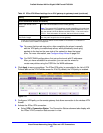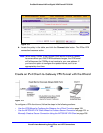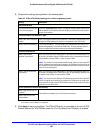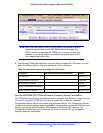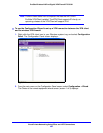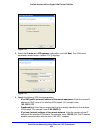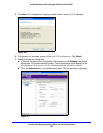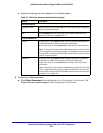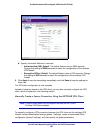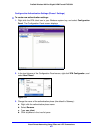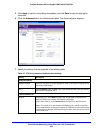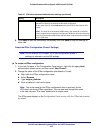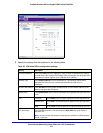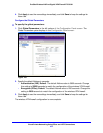
Virtual Private Networking Using IPSec and L2TP Connections
205
ProSafe Wireless-N 8-Port Gigabit VPN Firewall FVS318N
c. Specify the settings that are explained in the following table.
8. Conf
igure the global parameters:
a. Click Gl
obal Parameters in the left column of the Configuration Panel screen. The
Global Parameters pane displays in the Configuration Panel screen:
Table 45. VPN client advanced authentication settings
Setting Description
Advanced features
Aggressive Mode Select this check box to enable aggressive mode as the mode of negotiation
with the wireless VPN firewall.
NAT-T Select Automatic from the
drop-down list to enable the VPN client and
wireless VPN firewall to negotiate NAT-T.
Local and Remote ID
Local ID As the type of ID, select DNS fro
m the Local ID drop-down list because you
specified FQDN in the wireless VPN firewall configuration.
As the value of the ID, enter rem
ote.com as the local ID for the VPN client.
Note: The remote ID on the wireless VPN firewall is the local ID on the VPN
cli
ent. It might be less confusing to configure an FQDN such as client.com as
the remote ID on the wireless VPN firewall and then enter client.com as the
local ID on the VPN client.
Remote ID As the type of ID, select DNS f
rom the Remote ID drop-down list because
you specified an FQDN in the wireless VPN firewall configuration.
As the value of the ID, enter lo
cal.com as the remote ID for the wireless
VPN firewall.
Note: The local ID on the wireless VPN firewall is the remote ID on the VPN
cli
ent. It might be less confusing to configure an FQDN such as router.com
as the local ID on the wireless VPN firewall and then enter router.com as the
remote ID on the VPN client.



